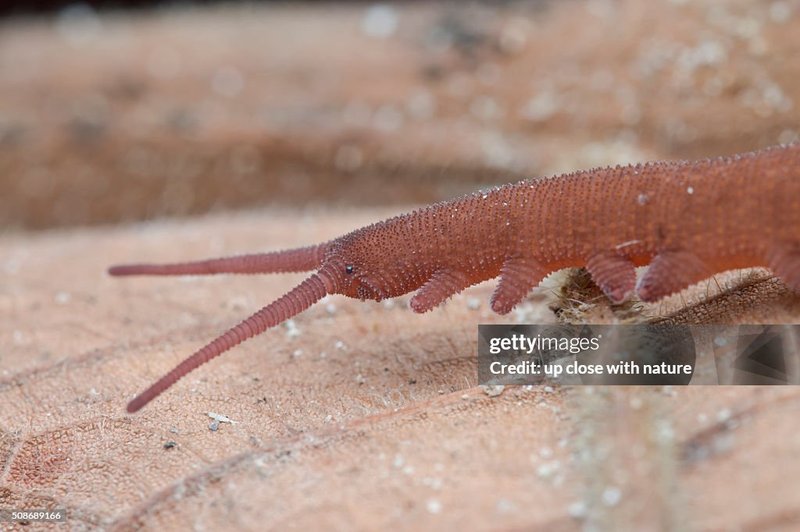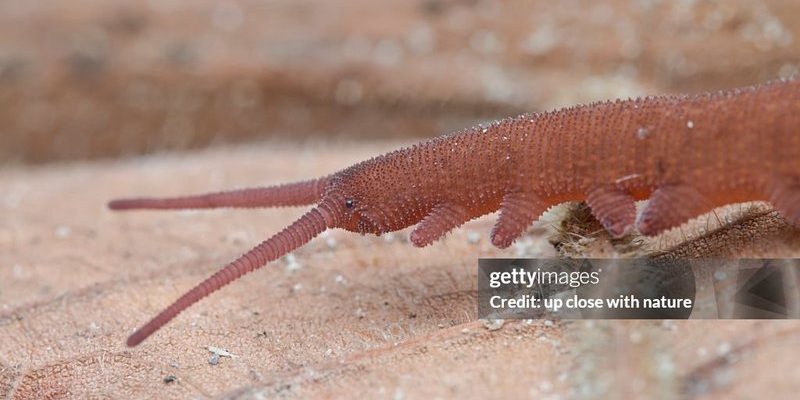
The velvet worm, scientifically known as *Onychophora*, has some pretty neat adaptations that enable it to thrive in its preferred moist environments. However, the idea of these slinky little guys battling the arid conditions of dry climates raises a lot of interesting points. Here’s the thing: while they have a fascinating biology, their survival depends heavily on moisture. So, can they really make it in dry areas, or are they forever resigned to the rainforests and wet hillsides? Let’s take a closer look.
What Are Velvet Worms?
Before we get into their survival tactics, it’s important to know a bit about what velvet worms actually are. Velvet worms are tiny, elongated creatures often found lurking under leaf litter or in damp crevices. They come in a range of colors, typically featuring soft, velvety skin—hence the name. Most species grow between 3 and 15 centimeters long and have an impressive array of limbs (up to 43 pairs!).
These creatures are carnivorous, feasting on small insects and other invertebrates. They use a unique hunting technique: when they find their prey, they shoot out a sticky slime to trap it. Kind of like a superhero move, right? They play a crucial role in their ecosystems by helping control insect populations.
But how does their biology affect their ability to survive in dry climates? Well, let’s explore that next.
The Importance of Moisture for Velvet Worms
Moisture is a big deal for velvet worms. They have soft bodies that can easily lose water through their skin, making them vulnerable in dry conditions. If you’ve ever left a wet sponge out on the counter, you know it dries out pretty quickly. Velvet worms face a similar fate. Without enough moisture in their surroundings, they risk dehydration.
This is why velvet worms are primarily found in humid environments. They often rely on high moisture levels from leaf litter, soil, and nearby sources of water. In fact, studies show that prolonged exposure to dry conditions can lead to increased mortality rates among these fascinating organisms. So, can they survive in dry climates? That depends on a few factors that we’ll explore further.
Adaptations to Moisture Loss
Even though velvet worms are quite dependent on moisture, they have developed some nifty adaptations that help them cope with less-than-ideal conditions. For example, some species can enter a state of reduced metabolic activity when faced with drought-like scenarios. This is similar to hibernation and helps them conserve energy and water.
Additionally, they possess a unique outer layer that offers some protection against moisture loss. You could think of this layer as a kind of moisture-retaining shield. A bit like putting on sunscreen when you know you’ll be out in the sun for too long, it helps keep them from drying out under certain conditions.
However, these adaptations have their limits. If the environment becomes too dry for too long, even their best tricks might not save them. So, let’s talk about what that means for these creatures in drier climates.
Can Velvet Worms Live in Dry Climates?
While velvet worms can survive short periods of dryness, they aren’t built for long-term life in arid climates. If you were to drop a velvet worm in the middle of a desert, it would likely struggle to survive. The lack of humidity and available moisture would make it nearly impossible for them to maintain their necessary water balance.
However, some studies show that certain species can be found in transitional areas where humidity levels fluctuate, like the edges of forests or in moist caves. Here, they might find just enough moisture to survive. Think of it like finding an oasis in a desert. It’s not their ideal home, but it can work temporarily.
Comparisons to Other Arthropods
If velvet worms struggle in dry climates, how do other arthropods manage? For instance, many insects like ants and certain beetles have evolved to thrive in arid environments. They have hardened exoskeletons that help minimize water loss and can often go extended periods without water.
In contrast, velvet worms are more like tropical houseplants—they flourish in moist, humid conditions but might droop and struggle in the dry air of a desert. While their peers adapt in various ways, velvet worms remain steadfastly tied to their humid habitats.
What Happens When Climate Changes?
With climate change altering weather patterns across the globe, velvet worms may face some serious challenges. Drier conditions could impact their habitats significantly, leading to population declines in areas that were once rich with moisture.
Moreover, as forests are cleared and urban areas expand, it could push these creatures into increasingly fragmented habitats. Here’s the thing: if moisture becomes scarce, they won’t just up and move to find better conditions. They’re limited in mobility and need specific environments to thrive.
In summary, velvet worms are not cut out for life in dry climates. While they have some fascinating adaptations, the harsh reality is that moisture is vital for their survival. As climate changes continue to reshape our planet, the future of these unique creatures may be uncertain. By understanding their needs, we can better appreciate their role in our ecosystems and the importance of preserving their natural habitats.
So, the next time you marvel at a velvet worm, remember just how delicate their existence is and why protecting moist environments is crucial for their survival. It’s a reminder of how interconnected everything is in nature.

